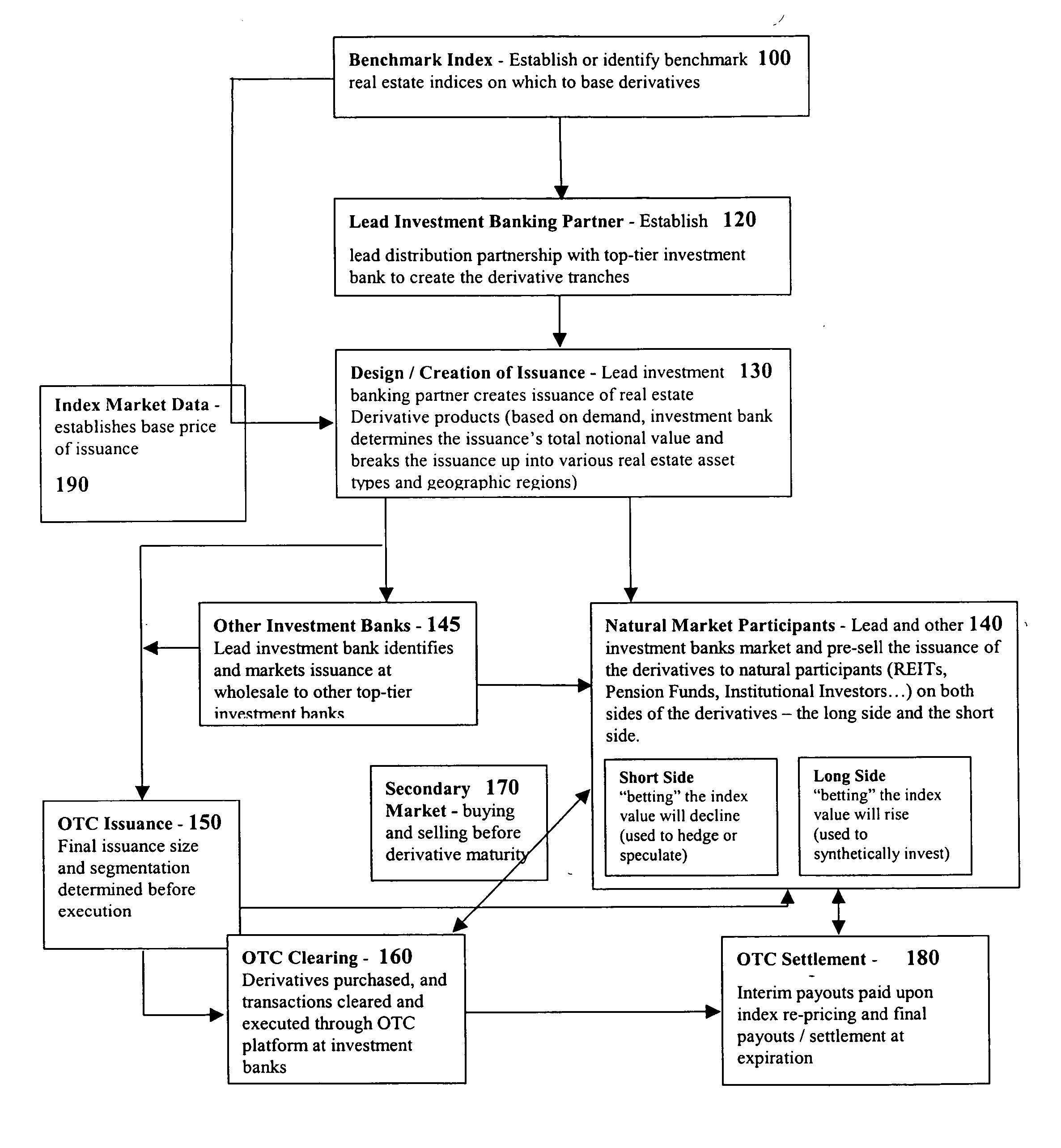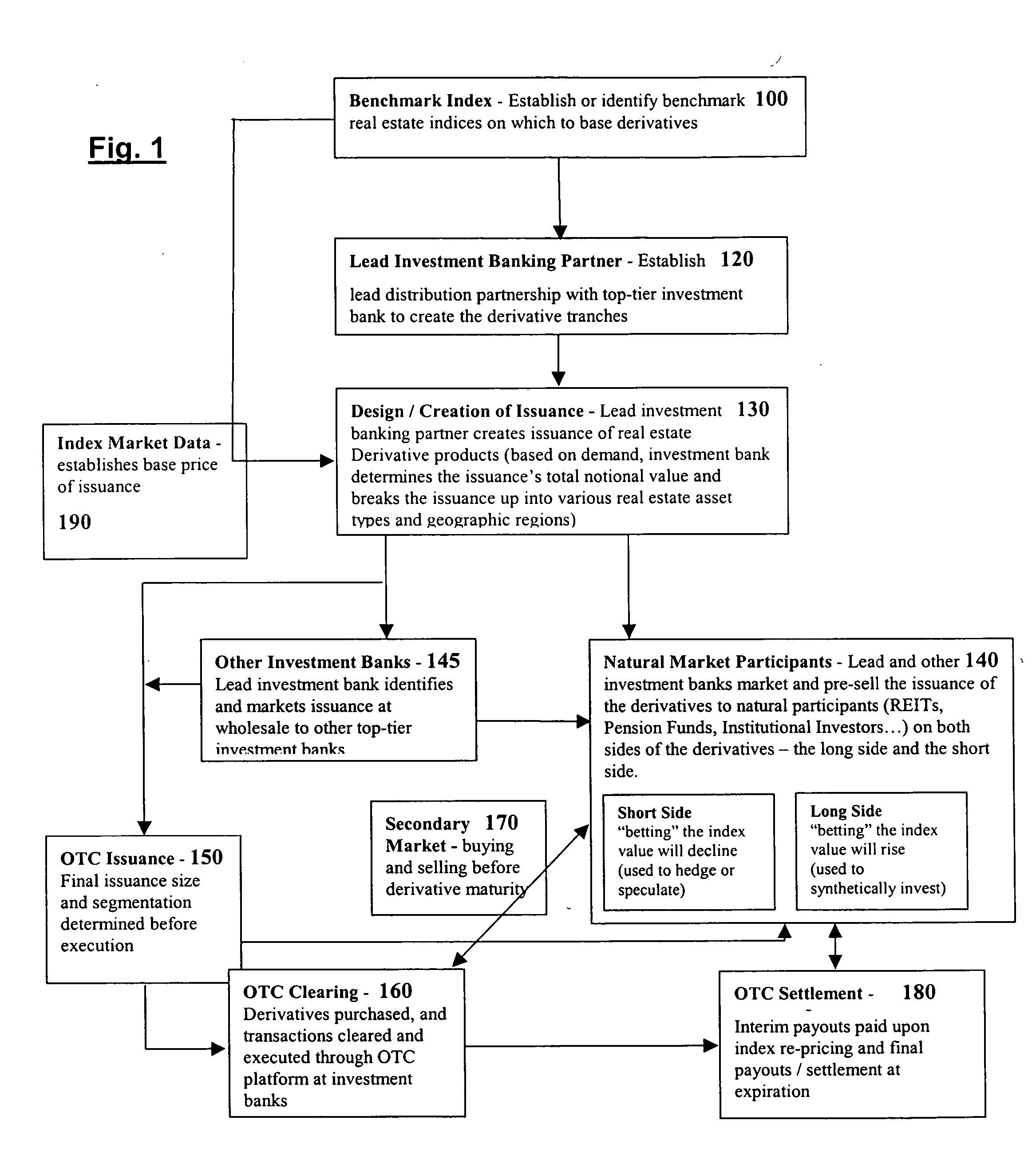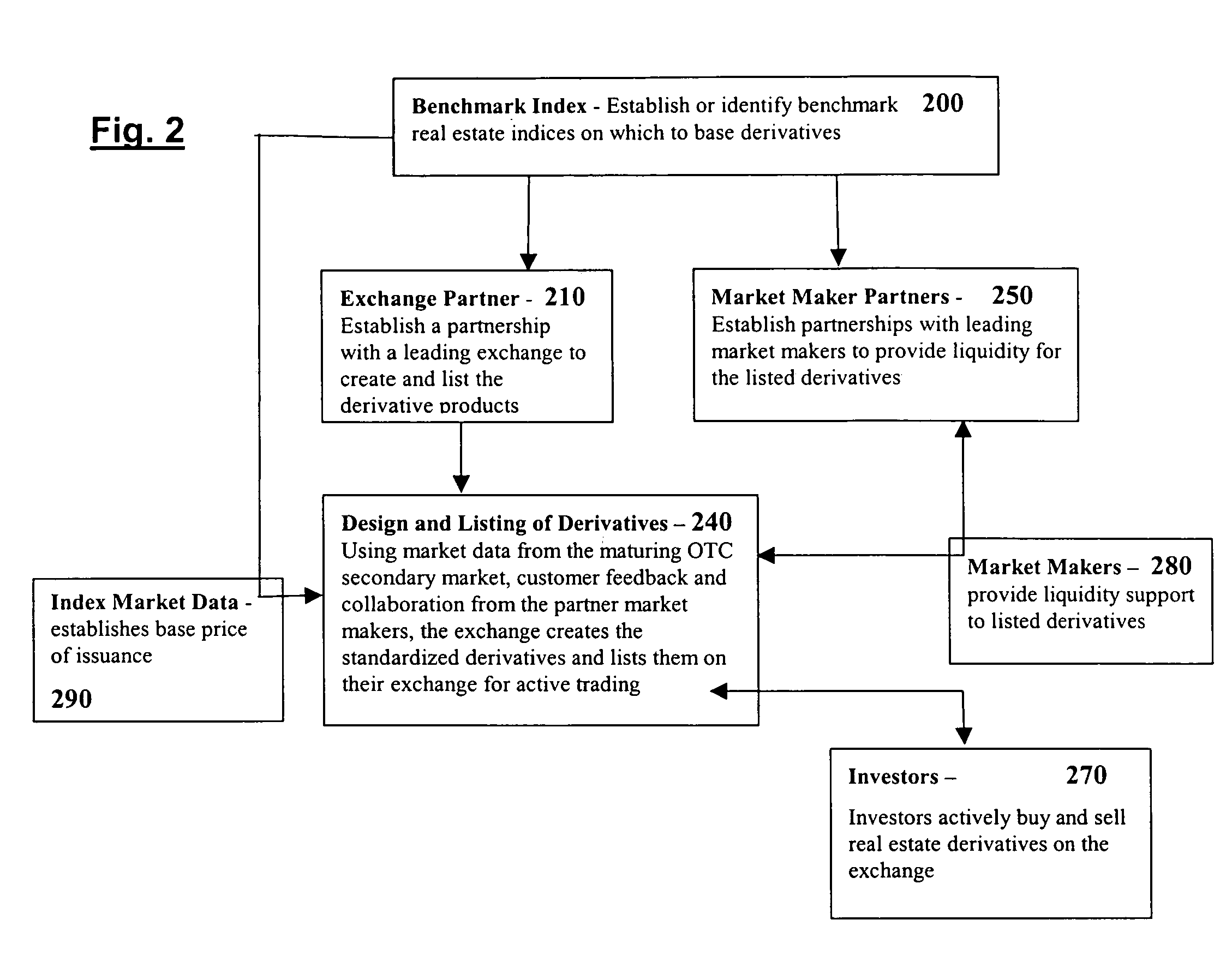Real estate derivative securities and method for trading them
a technology of real estate derivatives and derivative securities, applied in the field of real estate derivative securities and method for trading them, can solve the problems of not having a secondary derivatives market for this enormous asset class, real estate holdings can suffer from the risk of downward price movement, and adversely affect the net worth of many companies and individuals, so as to achieve the effect of broadening the portfolio of investment portfolios
- Summary
- Abstract
- Description
- Claims
- Application Information
AI Technical Summary
Benefits of technology
Problems solved by technology
Method used
Image
Examples
Embodiment Construction
[0022] These and other objectives are achieved by the present invention, which provides for the use of structured notes, swaps, futures, or options contracts that are cash settled based on an index of commercial or residential real estate prices or some other factor impacting real estate. Such financial instruments will permit the real estate owner to hedge his tangible real estate properties against the inherent risk of a downward movement in the value of the property, while providing investors a genuine opportunity to diversify their investment portfolios by achieving “synthetic” ownership of real estate and many of the corresponding rights of property ownership without having to incur the high costs of actually buying and maintaining tangible real estate assets, or investing in a REIT.
[0023] For purposes of this application, “commercial real estate” means rental property like office buildings, strip malls, malls, multiple-family apartments, and single-occupancy rental dwellings;...
PUM
 Login to View More
Login to View More Abstract
Description
Claims
Application Information
 Login to View More
Login to View More - R&D
- Intellectual Property
- Life Sciences
- Materials
- Tech Scout
- Unparalleled Data Quality
- Higher Quality Content
- 60% Fewer Hallucinations
Browse by: Latest US Patents, China's latest patents, Technical Efficacy Thesaurus, Application Domain, Technology Topic, Popular Technical Reports.
© 2025 PatSnap. All rights reserved.Legal|Privacy policy|Modern Slavery Act Transparency Statement|Sitemap|About US| Contact US: help@patsnap.com



